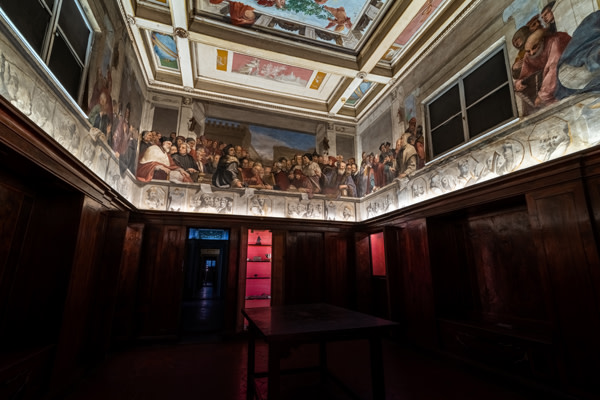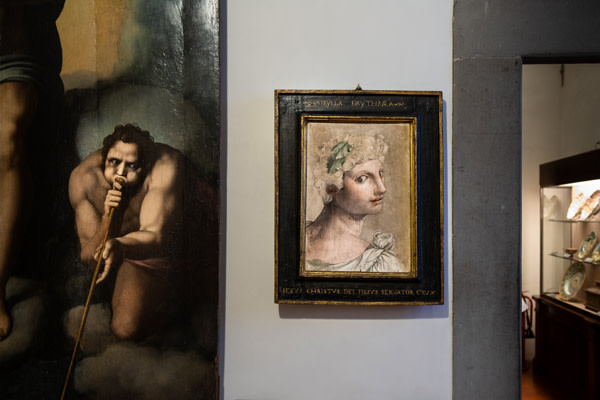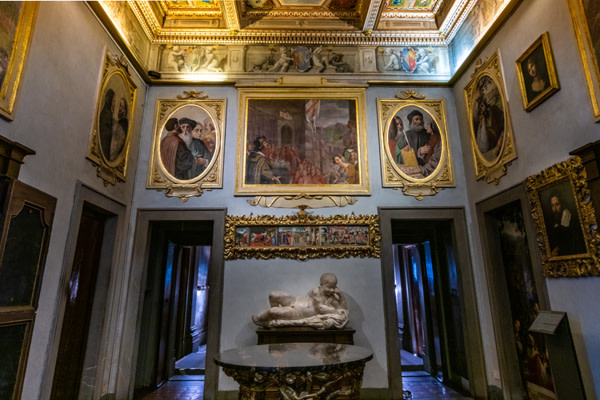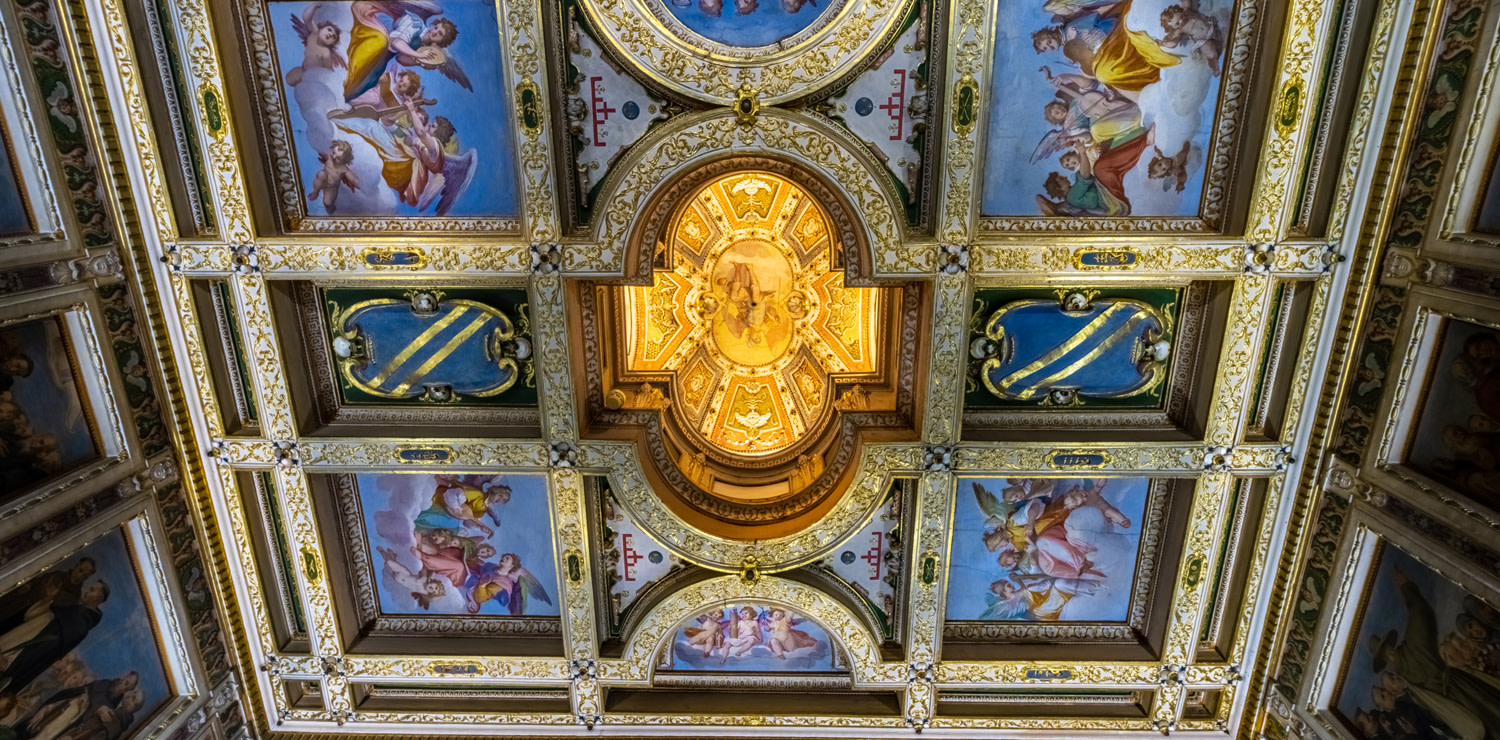Michelangelo. Everything you need to know about Casa Buonarroti
With Cristina Acidini rediscovering an authentic place
An exclusive visit to Casa Buonarroti with Cristina Acidini, President of the Buonarroti Foundation and a guide of extreme sensitivity. With her we got to know this place, a less popular destination than it should be on the tourist trail, but one with true historical value and a deep connection to Renaissance Florence.
 Casa Buonarroti
Casa BuonarrotiCan you briefly tell us the story of this building and its Michelangelo connection?
The little palazzo that we see today in via Ghibellina is the result of constant extension work to the buildings that stood here since the early sixteenth century, when Michelangelo and his family bought the first three small houses. The artist lived here at different periods until 1534, when he moved to Rome for good. It was from 1612, with Michelangelo the Younger, that it was transformed into a quasi-aristocratic residence.
A path through the Museum: things we shouldn’t miss
Casa Buonarroti is home to some of Michelangelo’s real belongings, and those of his descendants: entire volumes of letters and two-hundred autograph sketches of figures and architecture. The precious paper materials are stowed away and are only put on display for limited periods. The museum has two important works in marble, the Madonna of the Stairs and the Battle of the Centaurs and the Lapiths, dating back to the happiest period of Michelangelo’s adolescence, around 1490 to 1492, when he would go to the gardens of the Medici in San Marco and Lorenzo the Magnificent would host him in the Medici palazzo. But the little clay models are also extremely interesting: individuals or multiple figures intended to later be sculpted in marble, even if many of them, like Samson slaying the Philistines and the River God, which were meant for the Medici chapels or the New Sacristy in San Lorenzo, never achieved that.
 Casa Buonarroti
Casa BuonarrotiNoli me tangere: a project of Michelangelo’s became a painting thanks to Pontormo. A painting, but also a fascinating story...
The subject, which really focuses on the Magdalene as she stops and tries to touch the risen Christ, emphasises the female element of this episode in the Gospel. It was in fact commissioned by Vittoria Colonna, Marchioness of Pescara, a sensitive reader of the roles of Mary and the other women in Holy Scripture. Michelangelo sketched a draft, and then handed the painting duties over to Jacopo Pontormo. The original for Vittoria Colonna - whom Michelangelo would meet in Rome in 1534, becoming her devoted friend - is now kept in a private collection; our panel here might be a version that Pontormo produced for Alessandro Vitelli, a lord of Città di Castello, maybe with the help of the young Bronzino. The figures are grand yet nimble and graceful, and the impassioned attitude of the Magdalene suffuses her outstretched body, in her intimate, almost beseeching gesture. The clothes and the landscape are gleamingly intense in colour, with the strong contrasts so favoured by Pontormo.
The artwork closest to Cristina Acidini’s heart?
Every time, I can’t help waxing lyrical about the Battle of the Centaurs and the Lapiths, in which Michelangelo, still very young, crowded the block with fighting figures, humans and centaurs, making an unfathomable tangle of limbs that cross and support each other. It is an archive of the ideas that Michelangelo would keep mining for years to come: the young warrior in profile, however small, has the strength and pride of the future David; the fallen fighter, cradling his stone-struck head, would be reprised in the Adolescent, which now resides in the Hermitage but was intended as an agonised figure in the New Sacristy, and so on and so forth. But another piece I find fascinating is by the artist as the great, old man, who had not long to live. In 1564, at the ripe old age of 89, he asked his nephew, Leonardo Buonarroti, for his wood chisels: and so began a little Crucifixion, which lacks the arms of Christ and, indeed, a cross, but which fully embodies the spiritual pathos of the artist in his final meditations on the soul’s salvation through the love of Christ.
 Casa Buonarroti
Casa BuonarrotiCasa Buonarroti still, sadly, features little on the mainstream tourist trails, nor is it famous among the Florentines. Why visit?
One very good reason is its nucleus of autograph pieces by Michelangelo, along with those which owe their inspiration to him. The one wooden model of the façade of San Lorenzo, which has its own room to itself, is well worth a visit: it sprang from the strained relationship Michelangelo had with the Medici of generations after Lorenzo the Magnificent, which was not helped by the extraordinary demand on him to make San Lorenzo, the “Medicean” church, also include the Biblioteca Medicea Laurenziana, which he also designed. This is a very localised, very Florentine subject, but one relevant to art history across the world.









